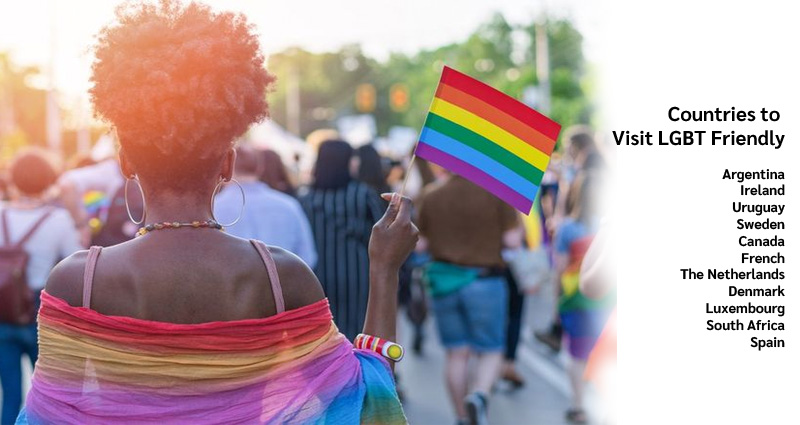Working abroad has many perks, from the opportunity to experience different cultures to progress in careers. However, decision-making can be more challenging for LGBT than for heterosexuals. LGBT is a crime in some parts of the world, and LGBT rights are decreasing in many areas. Fortunately, there are many nations where LGBTs are friendly welcomed, as you can find some of these countries in this article. You should see reviews from BritainReviews.co.ukfor feedbacks about some of these LGBT-friendly countries.
Here are some of the countries LGBTs can visit.
· Argentina
As the first Latin American country to accomplish this, Argentina legalized LGBT marriage back in 2010. When you visit Argentina, you get to see more than 30 national parks, the lovely metropolis of Buenos Aires, and the tango. Before you travel to Argentina to enjoy all its pleasures, you should read reviews on online travel insurance reviews to have insight into the insurances that will benefit you.
· Ireland
Ireland is the first to legalize same-sex marriage by popular voting in 2015 and provides strict protection from discrimination against LGBT. The city is one of the best gay-lesbian countries globally, with Dublin on the ‘best cities in the world’ list for Condé Nast Traveler.
· Uruguay
Uruguay is one of the most LGBT countries in South America and one of Gallup’s most acceptable lesbian and gay countries globally. It also led to laws expanding the rights of transgender, among them one adopted in 2009, which enables Trans persons to modify their official documents to reflect their gender identity.
· Sweden
Sweden appears on both the “Top Places for Gay People to Live” list from Gallup and the HSBC ex-pat list. In the Scandinavian country, same-sex marriage has been allowed since 2009, with discrimination against LGBT illegal since the 1980s.
· Canada
Canada is America’s neighbour in the north that approves same-sex marriage back in 2005, with LGBT openly becoming the new prime minister. According to recent research, Canada also houses Vancouver and Toronto, two of the top expatriate cities in the world.
· France
Paris, in particular, has an extraordinarily active LGBT culture, especially in the nightlife of the Marais. France allowed LGBT marriage in 2013 and is the world’s first country to de-list mental health transgender marriage identity.
· The Netherlands
According to Gallup, the Netherlands is regarded as the world’s most LGBT country and was also the first country to allow LGBT marriage in 2000. Amsterdam, its capital, is a major tourist destination for LGBT and one of the world’s greatest cities for ex-pats.
· Denmark
Denmark was the first country in the world to recognize LGBT unions since 1989, and in 2012 the Scandinavian State formally recognized LGBT marriage. Denmark has been designated one of the “Top Gay Live Places” by Gallup, and its capital, Copenhagen, is regarded among the leading ex-pat towns.
· Luxembourg
LGTB was allowed in 2014 in Luxembourg, and its first European leader was Xavier Bettl, who married a same-sex partner during his tenure. The little European nation is notably recognized for its white and sparkling wines, a fantastic spot for wine enthusiasts. It is a great place to visit if you are a wine lover!
· South Africa
South Africa was the first to allow same-sex marriage in 2006 in Africa — and there is still a second one. Johannesburg is the largest city and is also the LGBT epicentre of the country: the annual Jo’Burg Pride event, the International Gay and Lesbian Film Festival in Africa, and several of the yearly Mr Gay South Africa competitions are held in Johannesburg.
· Spain
According to the Pew Research Center, around 90% of Spanish inhabitants agree that lesbians and gay persons should be welcomed; and Gallup has Spain as number 1 the country for LGBT with the Netherlands. Also, in 2005, Spain was one of the first to allow LGBT marriage. LGBT culture, whether through writing Federico Garcia Lorca or Pedro Almodóvar’s films, has affected a large proportion of Spanish art.









